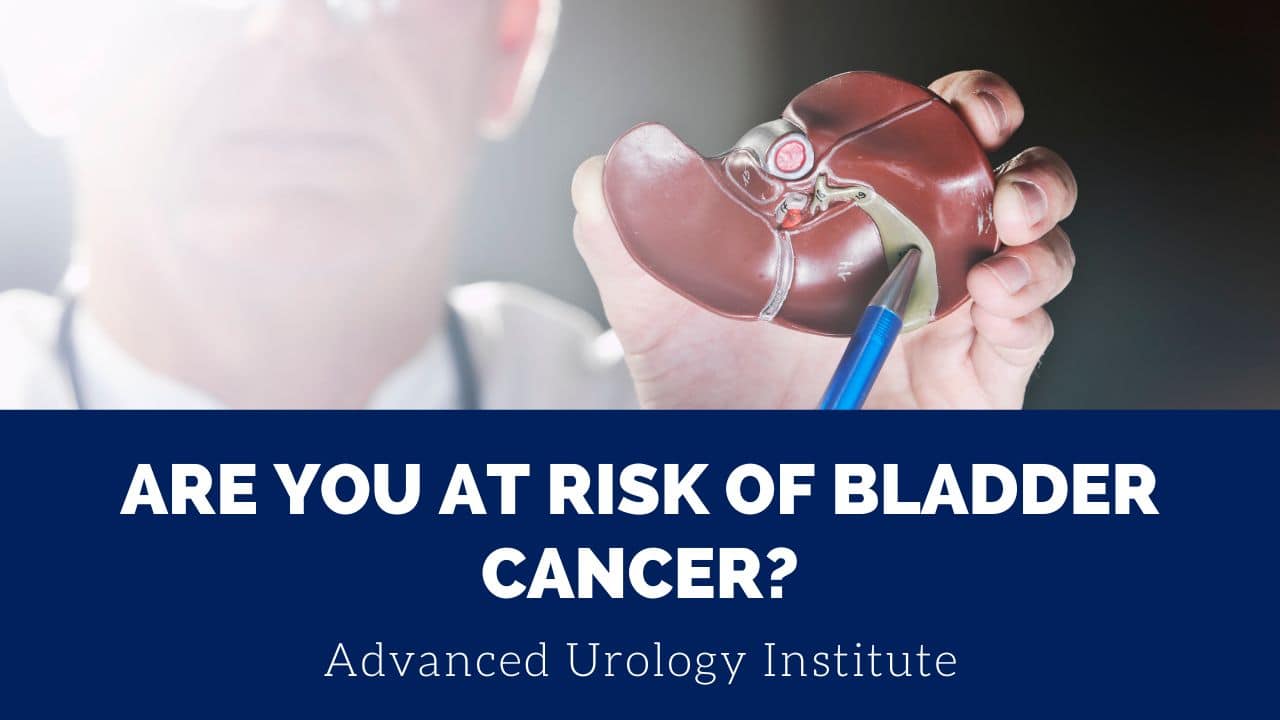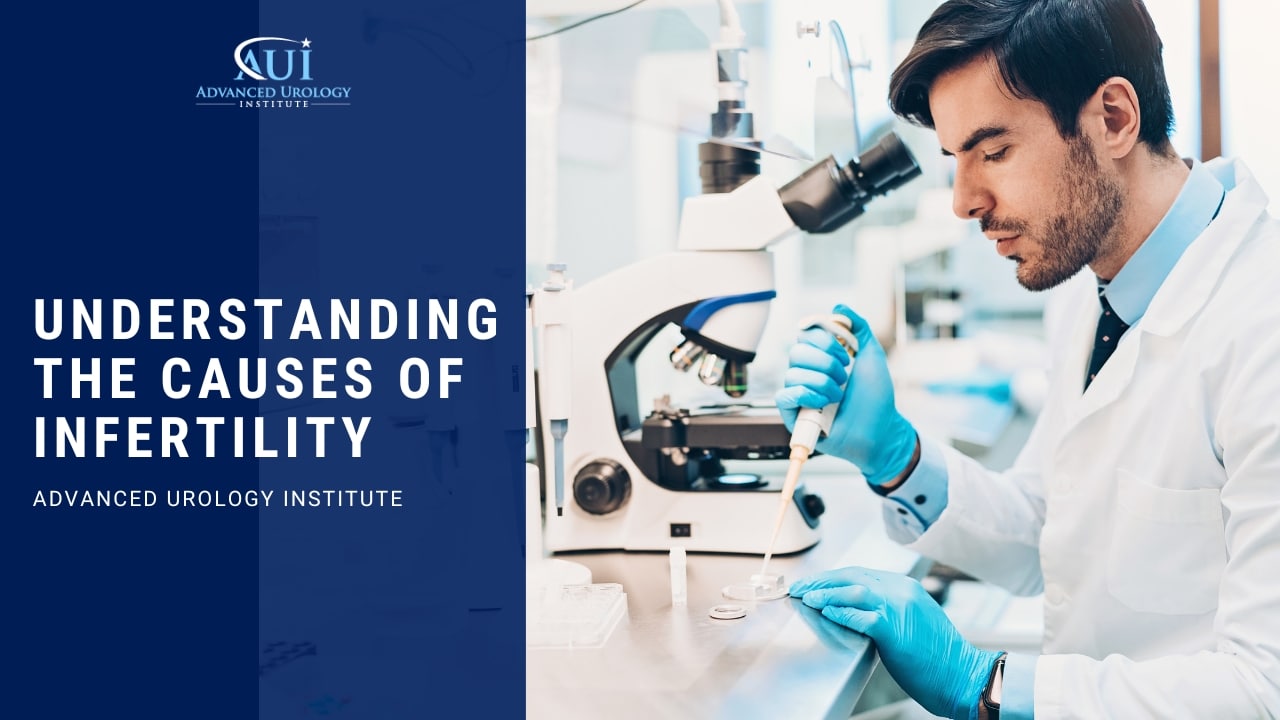For those considering this procedure, it is important to understand that a vasectomy can have an impact on a man’s sex life. This article will discuss what a vasectomy is, how it can affect a man’s sex life, and some advice and tips for those considering this procedure.
Continue readingGuidelines for Treating Prostate Cancer with Dr. Bill Vanasupa
Dr. Billy Vanasupa talks about the importance of informed decision-making when it comes to prostate cancer treatment. While medical professionals can offer guidance and recommendations based on the latest research and guidelines, ultimately, the patient should have a say in their treatment plan.
Continue readingThe Long-Term Effects of Vasectomy: What You Need to Know
Vasectomy Alternatives: What Are Your Options?
Vasectomy is the most common form of male sterilization and is a popular choice for couples who have completed their families. However, there are other alternatives to vasectomy, choices people might not be aware of.
Continue readingWhy Urology with Dr. Arash Rafiei
Arash Rafiei, a board-certified urologist, discusses the diverse nature of his profession and the importance of staying current with technology advancements. He emphasizes that urology involves a mix of both surgery and medicine.
Continue readingHow to Recover from a Vasectomy: Tips and Advice
It is very important for those who have had a vasectomy to do the necessary steps for recovery in order to avoid any further complications. This includes consulting with a medical professional before the procedure, having a clear understanding of the risks, and following the doctor’s instructions.
Continue readingProstate Enlargement and Prostate Cancer: Is there a Connection?
Prostate enlargement neither causes nor turns into prostate cancer, and is a completely separate condition. In fact, the risk of prostate cancer is lower in men with an enlarged prostate than in men without the condition. However, the two conditions are linked in various ways. Here are four ways in which BPH and prostate cancer are connected
Continue readingOvercoming UTI Recurrence: Tips for Prevention
Recurrent urinary tract infections (RUTIs) are due to persistent re-infection of any part of the urinary tract by the same pathogen. The infections can be really frustrating as they keep coming back. When you have recurrent UTIs, you can use antibiotics to clear the infection within a few days. You can also use the following simple measures to prevent UTIs.
Continue readingVasectomy and Age: Is There Right Time To Get the Procedure?
 Vasectomy is a permanent form of birth control that prevents a man from fathering biological children. The question of when to undergo the procedure is a personal one and there is no right time or age. However, on average, men tend to get the procedure at 35 years or older. It is important to note that a vasectomy is not recommended for men under the age of 18, and in some states, men under the age of 21 are not eligible for the procedure through federally-funded medical facilities.
Vasectomy is a permanent form of birth control that prevents a man from fathering biological children. The question of when to undergo the procedure is a personal one and there is no right time or age. However, on average, men tend to get the procedure at 35 years or older. It is important to note that a vasectomy is not recommended for men under the age of 18, and in some states, men under the age of 21 are not eligible for the procedure through federally-funded medical facilities.
It is important to make sure that you have given serious thought and consulted with professionals before making the decision to undergo the procedure. It is also important to consider factors such as your partner’s age and fertility. If your partner is nearing menopause or has a condition that prevents her from conceiving, a vasectomy may not be necessary.
It is also important to be aware that a change of mind is possible at any age, and it is crucial to thoroughly consider the decision before proceeding. If at any age, you are confident that you do not want children and a healthcare provider refuses to perform the procedure, it is recommended to seek a second opinion.
In terms of age limitations, there is no upper limit for a vasectomy as long as overall health is good enough. However, it is important to take into account any potential health risks and to discuss the pros and cons of the procedure with a healthcare professional. Ultimately, the right time to undergo a vasectomy is when you have fully considered the decision and are confident in your choice to not have any more biological children.
At Advanced Urology Institute, we prioritize your health, safety, and peace of mind. So, we ensure that we have enough time with you during consultation to explore the pros and cons of a vasectomy and make sure it is the right procedure for you. Book your consultation with us now to have your questions answered and to prepare yourself adequately for the procedure.
For more information on a vasectomy, vasectomy reversal, and other urological and male reproductive health services, visit the site “Advanced Urology Institute.”
Understanding The Causes of Infertility
Infertility can be a frustrating and emotionally challenging experience for couples trying to conceive. The causes of infertility can be attributed to health problems, environmental factors, or lifestyle choices.
Continue readingNatural remedies for an overactive bladder
 An overactive bladder (OAB) is a condition where you are not able to hold urine in your bladder due to involuntary bladder muscle contractions. It causes a frequent, sudden and difficult-to-control urge to pass urine, which may lead to unintentional loss of urine. You may also feel the urge to pass urine 8 or more times in 24 hours.
An overactive bladder (OAB) is a condition where you are not able to hold urine in your bladder due to involuntary bladder muscle contractions. It causes a frequent, sudden and difficult-to-control urge to pass urine, which may lead to unintentional loss of urine. You may also feel the urge to pass urine 8 or more times in 24 hours.
With an overactive bladder, the first-line treatment is usually behavioral and lifestyle changes. But if the condition remains troublesome even with the changes, further treatment may include medications, bladder injections, nerve stimulation, percutaneous tibial nerve stimulation (PTNS), or surgery.
So what are the natural remedies for an overactive bladder?
- Eliminating bladder irritants
Symptoms of an overactive bladder can be relieved by avoiding foods and drinks known to irritate the bladder.
Common culprits include alcohol, caffeine, artificial sweeteners, citrus fruits and juices, and chocolate. Other foods and drinks to avoid or reduce are sodas and fizzy drinks, cranberry juice, corn syrup, tomatoes, sugar, honey, vinegar, dairy, and spicy foods.
Since irritation from foods and drinks vary from person to person, you can benefit by keeping a diary of what you take and the associated bladder symptoms. A diary can help you work out which foods are causing you problems.
- Making lifestyle changes
Quitting smoking can remedy an overactive bladder. That’s because smoking tends to make the symptoms of the condition worse, while the coughing fits associated with smoking tend to increase OAB-associated leakage of urine.
Another change that can improve an overactive bladder is withdrawal of medications contributing to the problem. For instance, diuretics, antihistamines, muscle relaxants, sedatives, narcotics, and alpha-adrenergic antagonists worsen OAB symptoms. So if you’re taking any medications you suspect to be behind the problem, speak with your doctor about alternatives.
Also, losing weight can reduce the pressure on your bladder and pelvic floor muscles, and improve your bladder control.
- Using bladder control techniques
There are a number of bladder control techniques you can apply, including scheduled urination, delayed urination, and double-void technique.
- Scheduled urination
By scheduled urination, you keep a diary of your urinary habits, such as bathroom visits, any leakages, and urgency symptoms. Based on the patterns in your diary, you start scheduled bathroom trips aimed at adding at least 15 minutes to your normal urination times.
For example, if you pass urine every 60 minutes, you change this and schedule your bathroom breaks for every 75 minutes. Then you stick to these scheduled visits regardless of whether you feel the urge to pass urine or not. After that, you gradually increase the time interval between your bathroom visits
- Delayed urination
Delayed urination means every time you feel the urge to go, you try to delay by some minutes, if possible, usually by at least 5 minutes. You can use relaxation techniques, such as deep breathing to help delay. The aim is to gradually increase the delay time until you have achieved a 3-4 hour gap between your bathroom visits.
- Double voiding
Double voiding technique is useful if you feel your bladder does not empty fully. It is also worthwhile to double void before bedtime.
To do so, you sit in the toilet, lean slightly forward, rest your hands on your knees or thighs, and urinate as normal. Then you remain in the toilet and wait for another 30 seconds, leaning slightly further forward to urinate once more.
- Doing kegel exercises
Kegels involve strengthening exercises on the pelvic floor muscles, which are the muscles that help to control urine flow. To locate your pelvic floor muscles, try to stop urine flow midstream. If you succeed, it means you have located the muscles.
Now, practice squeezing these muscles for 10 seconds and relaxing for 3 seconds, repeating the pattern 10 times. Then try to do 3 sets of 10 repetitions daily. Deep breathe to make the process easier.
- Managing your fluid intake
Drinking plenty of water is essential for your health, and you shouldn’t stop because of an overactive bladder.
That’s because taking too little water allows your urine to be more concentrated, which may irritate your bladder lining and increase urgency. But excess fluid intake may also make frequency symptoms worse, such as fluid intake before bed contributing to urinating during the night.
Make sure to drink 6-8 glasses of water daily, but to avoid liquid intake 2-3 hours before going to bed.
- Using herbs and supplements
There are a number of herbs and supplements that are effective in treating an overactive bladder. Speak with your urologist about these options for recommendations, but don’t use them without your doctor’s advice.
Effective herbs and supplements include:
This is a blend of 10 traditional herbs that help with overactive bladder by increasing the bladder’s capacity and lowering bladder contractions. It reduces frequency, urgency, and nighttime urination in people with the condition.
- Capsaicin
Capsaicin is an extract from chili peppers. It works by blocking signals from the nerves in the bladder and ensures the bladder holds urine longer. Plus, it helps to manage pelvic pain syndrome, of which overactive bladder is usually a symptom.
- Pumpkin seed extract
The extract is effective in improving pelvic floor health. It helps to strengthen pelvic floor muscles and enhances control of muscles involved in passing urine.
- Magnesium hydroxide
Magnesium helps maintain normal blood pressure, reduces muscles spasms, and allows the bladder to empty fully. As an alternative to magnesium hydroxide, you can add magnesium rich foods, like bananas, kale, pumpkin seeds, and cashews to your diet if your doctor deems it safe.
- Saw palmetto
Saw palmetto has been tested in men with an enlarged prostate, where it has demonstrated efficacy in treating the condition as well as relieving bladder control symptoms. Hence, using it helps improve bladder issues associated with OAB.
- Resiniferatoxin
This is a chemical derived from a cactus-like plant. It is effective in blocking signals from the bladder nerves to the brain; hence, reducing the strength of the urge to pass urine, allows the bladder to hold urine longer, and relieves symptoms of an overactive bladder.
- Vitamin D
Increased intake of vitamin D lowers the risk of pelvic floor disorders, such as bladder leakage, especially in women. For older adults, more vitamin D in the diet or as a supplement effectively prevents bladder leakage.
This is an enzyme found in pineapple plant. It has powerful anti-inflammatory abilities and prevents bladder irritation. Therefore, it has a positive effect on those with an overactive bladder.
- Cornsilk
Cornsilk refers to the hair-like threads found on top of the ears of corn and beneath cornhusks. It is rich in flavonoids and is helpful in relieving bladder control symptoms by reducing inflammation and protecting the bladder wall against irritation.
- Cleavers
This is a wild flower with tiny hooks on its stems, seeds, and leaves. It reduces bladder inflammation and protects the bladder wall from irritation.
At Advanced Urology Institute, we are known for our comprehensive, accurate diagnosis and tailored approach to treating urological disorders. With an overactive bladder, we make sure to establish the underlying cause, whether weak or stretched pelvic floor muscles, an enlarged prostate, chronic UTI, obesity, diabetes, or a nerve problem.
Then, as first-line treatment, we often recommend natural remedies such as behavioral, lifestyle and dietary changes. For a more bothersome and persistent overactive bladder, we offer a variety of surgical and non-surgical interventions.
For more information on an overactive bladder and other urological disorders, visit the site “Advanced Urology Institute.”
Can kidney stones go away on their own?
 Kidney stones that range from 0.5 to 4.0 millimeters in diameter can and often do go away on their own. Such stones pass easily in urine without causing pain as long as there is adequate water intake to increase urine flow and aid their passage. These stones pass on their own within a few days, though most will do so within 2-3 weeks.
Kidney stones that range from 0.5 to 4.0 millimeters in diameter can and often do go away on their own. Such stones pass easily in urine without causing pain as long as there is adequate water intake to increase urine flow and aid their passage. These stones pass on their own within a few days, though most will do so within 2-3 weeks.
Problematic kidney stones
On the other hand, kidney stones that are 5 millimeters or bigger in diameter don’t go away easily on their own. As they move down the urinary tract, they may get stuck and cause severe pain that may require narcotics for initial pain relief.
Then as the stone continues to move down the urinary tract, NSAIDs (non-steroidal anti-inflammatory medication) can be used to manage the pain. Drinking a lot of water may help to pass such stones.
With guidance and supervision of your urologist, you can stay at home and wait for kidney stones to pass on their own. But when in too much pain, you may need hospitalization for pain control and intravenous (IV) fluids to boost hydration and further help the stones to pass.
Medication to help bothersome stones pass
Kidney stones that are 5-10 millimeters in diameter may be problematic, but they still have a reasonable chance of going away on their own. To aid their passage, your urologist may prescribe the drug tamsulosin (Flomax), an alpha-blocker medication that relaxes the muscles of the distal ureter—the portion of the ureter right above your bladder.
Relaxing the ureter helps kidney stones to pass on their own in urine over a period of 2-4 weeks. It also relieves discomfort associated with the stones. But tamsulosin is equally a well tolerated drug that increases the probability of passing a stone from home and without further medical intervention.
Of course, giving the drug does not guarantee that the stone will pass in urine. However, as long as there is no severe pain that needs hospital admission for a surgical procedure, the drug is great option for passing kidney stones from home.
When is surgery the best option?
If kidney stones fail to go away on their own for up to 6 weeks, surgery is the best option. In fact, a timely surgical removal of the stones helps to avoid possible blockage of the ureter.
Ureter blockage can cause pain, problems with urination, blood in urine, and changes in the amount of urine produced. Also, if left untreated, a stone that is blocking urine flow can cause complications, such as recurrent urinary tract infections (UTI), hydronephrosis, and permanent kidney damage.
Equally, when kidney stones occur alongside a urinary tract infection, sepsis may develop. Since sepsis is a life-threatening condition, it may be necessary to have a tube (catheter) placed in the ureter or kidney to drain the infected urine.
Surgical interventions include:
- Shock wave lithotripsy
It is the least invasive outpatient procedure for removing kidney stones that fail to pass on their own. A urologist uses a machine to generate waves that are then targeted at the kidney stone with the help of imaging guidance. No incisions are made.
A stone is hit several times with the waves in a procedure that takes roughly 2 hours and with the patient under general anesthesia. In the process, the stone breaks into smaller pieces, which go away on their own in urine without much discomfort.
Shock wave lithotripsy is advisable for smaller kidney stones, 2 centimeters or less in diameter, but that are located high up in the kidney.
- Ureteroscopy
For kidney stones 1.0 to 1.5 centimeters in diameter, ureteroscopy is an effective option. The minimally invasive outpatient procedure involves placing a small, lighted tube with a camera at its tip—ureteroscope—into the urethra, then into the bladder, and further up the ureter.
A smaller laser device is then passed through the scope to help break down the stone. The resulting stone fragments are removed via a basket, a stent, or rubber tube passed through the scope.
- Percutaneous nephrolithotomy and nephrolithotripsy
When kidney stones are bigger than 2 centimeters in diameter, percutaneous nephrolithotomy or nephrolithotripsy is the preferred surgical intervention. In both procedures, the urologist makes an incision in the back to create a pathway to the kidney.
A nephroscope—a tube with surgical tools and a camera on its tip—is inserted through the incision. If the surgical tools are used to remove the stone, the procedure is called nephrolithotomy. But when the tools are only used to break up the stone, the procedure is called nephrolithotripsy.
Through the nephroscope, the doctor administers a laser or ultrasonic device that vibrates at high frequency to fragment the stone. Then suction is passed via the tube to remove the fragments. The doctor may also insert a stent in the ureter to help with swelling and enable the patient to urinate.
- Robotic assisted laparoscopic nephrolithotomy
For patients with bigger, more problematic stones, robotic assisted surgery is a great option. During the procedure, the surgeon makes small incisions in the abdomen through which a laparoscope (a lighted tube with tiny surgical tools and a camera at its tip) is inserted.
Using the surgical tools controlled by a computer console in the operating room, the doctor accesses and opens up the kidney to remove the stone.
Are you suspecting that you have kidney stones? At Advanced Urology Institute, we offer a range of surgical and non-surgical interventions to deal with kidney stones.
For more information on prevention and treatment of kidney stones and other urological problems, visit the site “Advanced Urology Institute.”
Early detection of prostate problems
 The prostate is a tiny gland located just beneath the bladder and in front of the rectum. It surrounds the urethra and produces fluid that forms part of the semen.
The prostate is a tiny gland located just beneath the bladder and in front of the rectum. It surrounds the urethra and produces fluid that forms part of the semen.
Though small in size, the prostate is one of the most talked-about glands in men and which causes a lot of concerns. In fact, all men are at risk of developing prostate problems.
The prostate problems include:
- Prostatitis
This is an issue frequently associated with young and middle-aged men. Prostatitis refers to inflammation of the prostate due to a bacterial infection or other cause. Only 5-10 percent of men develop prostatitis in their lifetime.
- Benign prostatic hyperplasia (BPH)
Also called an enlarged prostate, BPH is the growth of the prostate gland to a large, unhealthy size. The risk of having the problem increases with age.
While just 8-percent of men in the ages 31-40 may develop the condition, up to 50-percent of men aged 51-60 years and more than 80-percent of men aged over 80 years have BPH.
An enlarged prostate is neither prostate cancer nor a cause of the cancer. Also, only 50-percent of men with BPH develop symptoms that are severe enough to warrant treatment.
- Prostate cancer
Prostate cancer is one of the most common cancers in men with more than 16 percent of men diagnosed with the cancer in their lifetime. Nevertheless, it is a slow-growing cancer and only about 2-percent of men end up dying of the cancer.
Just like BPH, the risk of having prostate cancer increases with age. In fact, 75-percent of men with the cancer are usually aged 65 years and older.
The exact cause of prostate cancer is unknown, but risk factors include family history and race. For instance, if you have a brother or father with prostate cancer your risk of the disease increases by more than double. Also, African-American men are at a greater risk of the cancer than Caucasians.
That is why African-American men and those with family history of the disease are advised to begin screening at an earlier age than the rest of men.
Symptoms of prostate problems
Because the prostate is located just beneath the bladder and surrounds the urethra, problems with the gland usually result in urinary symptoms.
For instance, while prostatitis rarely shows symptoms, it may cause:
- Pain when urinating or ejaculating
- Turbid or cloudy urine
- An urge to urinate more often
- Pelvic pain
- Chills and fever
Like prostatitis, an enlarged prostate may not cause symptoms until it compresses the urethra and makes urination difficult. When it shows symptoms, BPH produces:
- Frequent urination, particularly at night
- Inability to delay urination
- Difficulty starting or stopping urination
- Feeling as if you can’t get all urine out
- Weak urine stream or interrupted stream
- Dribbling at the end of urination
- Accidental loss of urine
- Pain during urination or after ejaculation
- Urine of unusual smell or color
Early-stage prostate cancer does not usually show symptoms and is often only discovered after screening with the prostate-specific antigen (PSA) test or the digital rectal exam (DRE). But advanced prostate cancer shows symptoms such as:
- Trouble urinating
- Blood in urine or semen
- Reduced force in urine stream
- Inability to urinate
- Pain or burning sensation during urination
- Blood in urine or ejaculate
- Bone pain
- Back pain
- Erectile dysfunction
- Loss of weight without trying
Early detection of prostate problems
- Prostatitis
With prostatitis, the infection is detected early through symptoms. For example, acute bacterial prostatitis tends to begin suddenly, producing chills, fever, or pain in addition to urinary symptoms. Visiting the doctor right away helps to diagnose and treat the infection.
Chronic bacterial prostatitis is a prostate infection that recurs. It is detected via reappearance of similar symptoms that trigger visits to the doctor. When diagnosed, it is managed with antibiotics, though it is quite hard to treat.
Equally, chronic prostatitis, also called chronic pelvic pain syndrome, can be detected early through symptoms such as persistent pain in the lower back, groin or tip of the penis. It is treated with a combination of medicines, surgery and lifestyle changes.
- An Enlarged Prostate
Like prostatitis, an enlarged prostate can be detected early through symptoms—though such symptoms do not usually match the severity of the condition. That is why men who start to experience urinary symptoms should consult a urologist as soon as possible.
An early visit to a urologist when you have symptoms helps to:
- Catch BPH in early stages when less invasive procedures are most effective.
- Bring the symptoms under control and improve quality of life.
- Rule out other potential causes of urinary symptoms, such as prostate cancer.
- Prostate Cancer
Since prostate cancer tends to show no early warning signs and only produces symptoms when at an advanced stage, early detection is not achieved through symptoms. Instead, the cancer is detected early by screening tests, usually prostate-specific antigen (PSA) test and digital rectal exam (DRE).
Screening means testing to find prostate cancer in a man without symptoms. The tests used do not provide a diagnosis, but offer valuable information to help find the disease early. Plus, the tests are quick and safe.
Should you undergo screening for prostate cancer?
Screening for prostate cancer is controversial—while some doctors and organizations recommend regular screenings other organizations don’t.
According to the American Cancer Society, you should speak with your doctor about the benefits, risks, and limitations of screening before you make the decision to get tested. The organization asserts that you should not undergo PSA blood testing before this discussion. And that the discussion should begin at age 45 if you’re a man at higher risk and at age 50 if you have average risk of the cancer.
Another organization, the American Urological Association, recommends speaking with your doctor about the risks and benefits of prostate cancer screening when you’re aged 55 to 69 years. But that you should only proceed with testing based on your preferences and personal values.
American Urological Association:
- Does not recommend PSA screening if you are below 40 years.
- Does not recommend routine PSA screening if you are between the ages 40-54 and at an average risk of the cancer.
- Does not recommend PSA screening in men aged over 70 years and those with a life-expectancy of less than 10 years.
- Does not recommend annual screening, but instead routine screening at intervals of 2 years or more, which must be preceded by a discussion with your doctor.
The United States Preventive Services Task Force does not recommend routine PSA screening for men in the general population, regardless of age. According to the organization, routine cancer screening can detect slow-growing cancers, which are then managed using therapeutic techniques with serious adverse effects but with no much benefit to the patient.
Prompt effective diagnosis of prostate problems
At Advanced Urology Institute, we are committed to early detection of prostate problems. We believe that it is important for patients to participate in screening programs for patients with the chance to speak with experienced physicians and the opportunity for informed decision-making and timely follow-up care.
We provide our patients with open, compassionate consultations that allow for informed decision-making and proper follow-up care, resulting in access to high-quality, objective diagnosis and treatment decisions. Plus, we guard against screening related problems, such as over-diagnosis and treatment of clinically insignificant conditions.
For more information on prostate cancer and other urological disorders, visit the site “Advanced Urology Institute.”
Are You at Risk for Bladder Cancer?
 Bladder cancer is a common type of urological cancer that begins in cells of the bladder. The bladder is a hollow muscular organ in the lower abdomen where urine is stored.
Bladder cancer is a common type of urological cancer that begins in cells of the bladder. The bladder is a hollow muscular organ in the lower abdomen where urine is stored.
The cancer starts when cells of the bladder undergo changes, called mutations, in their DNA. Due to the changes, the cells multiply rapidly and uncontrollably. And they are also able to survive when normal and healthy cells die.
As a mass of abnormal cells builds forming a tumor, the resulting tumor invades and destroys normal bladder tissues and may even break away and spread through the body.
What are the different types of bladder cancer?
- Urothelial carcinoma (transitional cell carcinoma)
This is the most common type of bladder cancer. It occurs in the cells of the inner lining of the bladder, called urothelial cells. After cancer begins in these cells it often spreads to adjacent tissues and can even invade distant organs.
- Squamous cell carcinoma
This is a rare type of bladder cancer that tends to occur after an infection or long-term use of a urinary catheter. It is associated with chronic irritation of the bladder and can be caused by certain parasitic infections, such as schistosomiasis.
- Adenocarcinoma
This is also a less common type of bladder cancer. Adenocarcinoma occurs in the cells that form mucus-secreting glands in the bladder before invading adjacent tissues.
Who is at risk of bladder cancer?
- A smoker
Smoking of cigarettes is the most common association and causes of bladder cancer. In fact, smoking generally including cigars and pipes can also increase the risk of cancer. Cigarette and tobacco smoke contains harmful chemicals that reach the bloodstream and are excreted in urine.
When the chemicals linger in the bladder, they damage or cause changes in cells. This increases the risk of cancer. In fact, cigarette smokers have three times more risk of bladder cancer than non-smokers.
- A person over the age of 55 years
While bladder cancer can occur at any age, it is more often diagnosed in people above the age of 55 years. And with up to 90-percent of those with the cancer being aged 55 years or older, aging is a major risk factor for bladder cancer.
- Being male
Being male predisposes you to a higher risk of bladder cancer than being female. In fact, men are four times more likely to develop cancer than women. However, women have a higher likelihood of late diagnosis of the cancer, which makes them more likely to die of the disease than men.
- Being white
Race is a factor in bladder cancer. Generally, white people are twice as likely to be diagnosed with bladder cancer than black people. Nevertheless, black people are twice as likely to die from the disease as white people.
- Being frequently exposed to certain harmful chemicals
Frequent exposure to certain chemicals increases the risk of bladder cancer. For example, in places where arsenic is found in drinking water, there is a higher incidence of cancer.
Also, people repeatedly exposed to aromatic amines, such as benzidine and beta-naphthylamine, often used in the dye industry, have a higher risk of cancer. Likewise, chemicals used to manufacture dyes, rubber, leather, paint, and textile products increase the risk of bladder cancer.
That is why painters, printers, machinists, hairdressers (due to heavy exposure to hair dyes), truck drivers (exposure to diesel fumes), and industrial workers in rubber, leather, textile, and paint factories have greater risk of bladder cancer.
The chemicals reach the bloodstream and get filtered by the kidneys, allowing them to be present in urine. Once in urine, they may cause mutation of bladder cells, which eventually triggers cancer.
- A person with chronic bladder inflammation
Repeated bladder inflammation causes changes in bladder cells and may result in cancer. Hence, conditions such as kidney and bladder stones, recurrent urinary tract infections, chronic inflammation (cystitis), and long-term use of a urinary catheter increase the risk of bladder cancer.
- A person with personal or family history of bladder cancer
If you have had previous bladder cancer, you’re more likely to get it again. Also, if you have blood relatives—a sibling, parent or child—who has had the cancer, you have a greater risk of the cancer, though it is rare for the disease to run in families.
- A person who has previously been treated for cancer
When you have been treated with the anti-cancer drug cyclo-phosphamide, you have a higher risk of bladder cancer. Similarly, if you have received radiation treatment aimed at your pelvis for a previous cancer, then you have a greater risk of developing bladder cancer.
How can you prevent bladder cancer?
While there is no guaranteed way of preventing bladder cancer, taking certain steps can reduce your risk of the disease. Useful preventative steps include:
- Avoiding smoking
If you’re not a smoker, just don’t start. And if you smoke, speak with your doctor about a tailored plan to help you stop. Medications, support groups, and other methods may help.
- Taking precautions when around certain chemicals
When working with various chemicals, follow the necessary safety precautions to avoid exposure.
- Eating a diet rich in fruits and vegetables
A diet rich in vegetables and fruits will provide antioxidants that help reduce the risk of bladder cancer.
- Drinking enough fluid
When you drink a lot of fluid, particularly water, you lower your risk of bladder cancer. More fluid intake helps you to empty your bladder more frequently and ensures harmful chemicals do not linger in your bladder long enough to cause damage.
Compassionate, patient-centered cancer care
If you see blood in your urine, you could have bladder cancer and should be seen by a board certified urologist.
Would you like to undergo timely and accurate screening and diagnostic tests for bladder cancer?
Through our compassionate, patient-centered approach, Advanced Urology Institute ensures that all patients get quality time with urology oncologists, have their concerns addressed and undergo comprehensive screening and diagnostic testing.
For more information on bladder cancer and other urological disorders, visit the site “Advanced Urology Institute.”
7 Signs You Might Have Kidney Stones
 An elevated amount of salts and minerals in urine can cause kidney stones. Also called renal calculi, kidney stones are hard deposits made of crystal-forming substances such as calcium, uric acid and oxalate, found in urine. The stones vary in size, with some being too small, some a few inches across, and others large enough to take up an entire kidney.
An elevated amount of salts and minerals in urine can cause kidney stones. Also called renal calculi, kidney stones are hard deposits made of crystal-forming substances such as calcium, uric acid and oxalate, found in urine. The stones vary in size, with some being too small, some a few inches across, and others large enough to take up an entire kidney.
For smaller renal stones, there are usually no associated signs. The stones can travel from the kidneys through ureters, bladder and urethra without causing any problems. And drinking plenty of water really helps in passing these stones.
But for larger kidney stones, signs appear as the stones move from one part of the urinary tract to another. An example is when a moderate or large stone moves from the kidney to the ureter. It immediately causes obstruction and produces agonizing pain. Such stones require a procedure, such as shock wave lithotripsy, to break up and remove them.
So what are the signs that you might have kidney stones?
- Pain in your lower back, side, or belly
Kidney stones produce one of the most severe types of pain—comparable only to getting stabbed by a knife or pain during childbirth. The pain tends to begin when the stone moves into the ureter, causing a blockage and pressure buildup in the kidney. This pressure activates nerve fibers to send pain signals to the brain.
The pain starts suddenly and changes location and intensity as the stone moves. It also comes and goes in waves, with each wave lasting a few minutes, disappearing, and then coming back. The pain usually occurs along the side and back, below the ribs, but can radiate to the belly and groin area as the stone moves down the urinary tract.
- Tossing and turning
The sudden episodes of kidney stone pain last 20-60 minutes. But they are so severe that they don’t allow you to sit still. So you’re forced to move around, toss and turn, in order to find a more comfortable position.
- Burning sensation during urination
When a kidney stone reaches the junction between the ureter and bladder, it causes sharp or burning pain during urination. It is quite easy to mistake the stone for a urinary tract infection (UTI). Of course, it is also common to have an infection alongside a kidney stone.
Apart from pain during urination, kidney stones can cause urinary frequency and urgency as they pass to the lower part of the urinary tract. That’s because a stone irritates the walls of the bladder and causes contraction, resulting in the urge to pass urine. You may find yourself running to the bathroom frequently or feeling the urge to go throughout the day and night.
- Nausea and vomiting
Kidney stones can cause obstruction of urine flow. This makes urine to back up, stretching or swelling the kidneys. Eventually, this may lead to nausea and vomiting.
Also, due to the excruciating pain associated with kidney stones, you may experience nausea and vomiting as one of the responses.
Equally, due to the sharing of nerve connections between the kidneys and the gastrointestinal tract, the presence of stones in the urinary tract disrupts nerves in the intestinal tract, resulting in stomach upset.
- Blood in urine
Kidney stones irritate the delicate tissues that line the urinary tract, including inside the ureter. As a result, there may be significant, microscopic, or moderate bleeding, which results in blood in urine (hematuria).
So as a sign of kidney stones, your urine may look grossly red, pink, or brown. You may also have blood in urine, but in quantities that are too small to notice with the naked eye. In that case, a urine test may be necessary to detect the urine.
- Fever and chills
Though fever is not a common sign of kidney stones, it may occur when the stones block urine flow or if the stones cause conditions that allow for an infection. Like fever, chills tend to occur due to an infection that arises as a complication of kidney stones.
When they occur, fever and chills are usually a medical emergency. And so, the obstruction should immediately be dealt with through a procedure such as shock wave lithotripsy to enable antibiotics to pass through the obstructed area.
- Smelly or cloudy urine
Urine that is healthy tends to be clear and without a strong odor, but turbid, smelly urine might indicate an infection. So, while foul-smelling or cloudy urine does not directly indicate kidney stones, it may point towards an infection that arises as a complication of renal stones.
Generally, more than 16-percent of people with acute kidney stones tend to have UTIs. And whether it occurs with or without fever, the combined presence of a UTI and kidney stones is a surgical emergency.
When should you see a doctor?
You should see your doctor when you have agonizing pain, nausea, vomiting, bloody, turbid or smelly urine, fever or chills. It is advisable to seek immediate medical attention when you have pain that is so severe that you can’t get comfortable. For more information on kidney stone treatment, visit the site “Advanced Urology Institute.”












